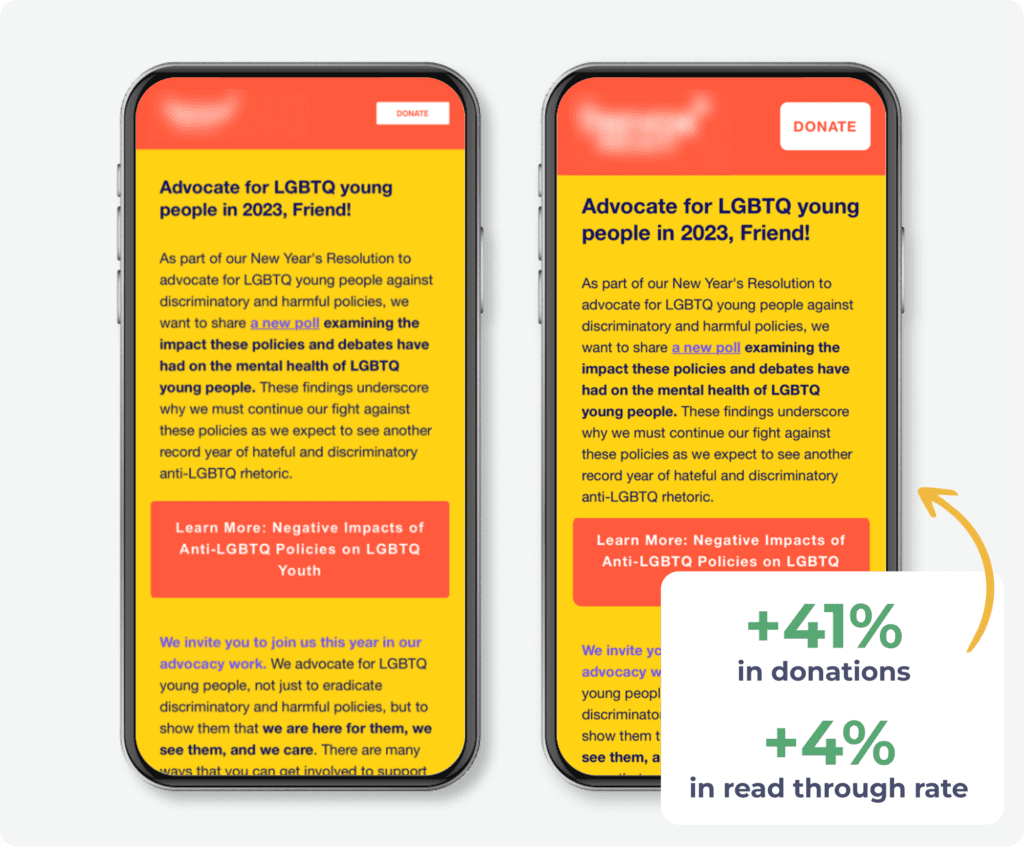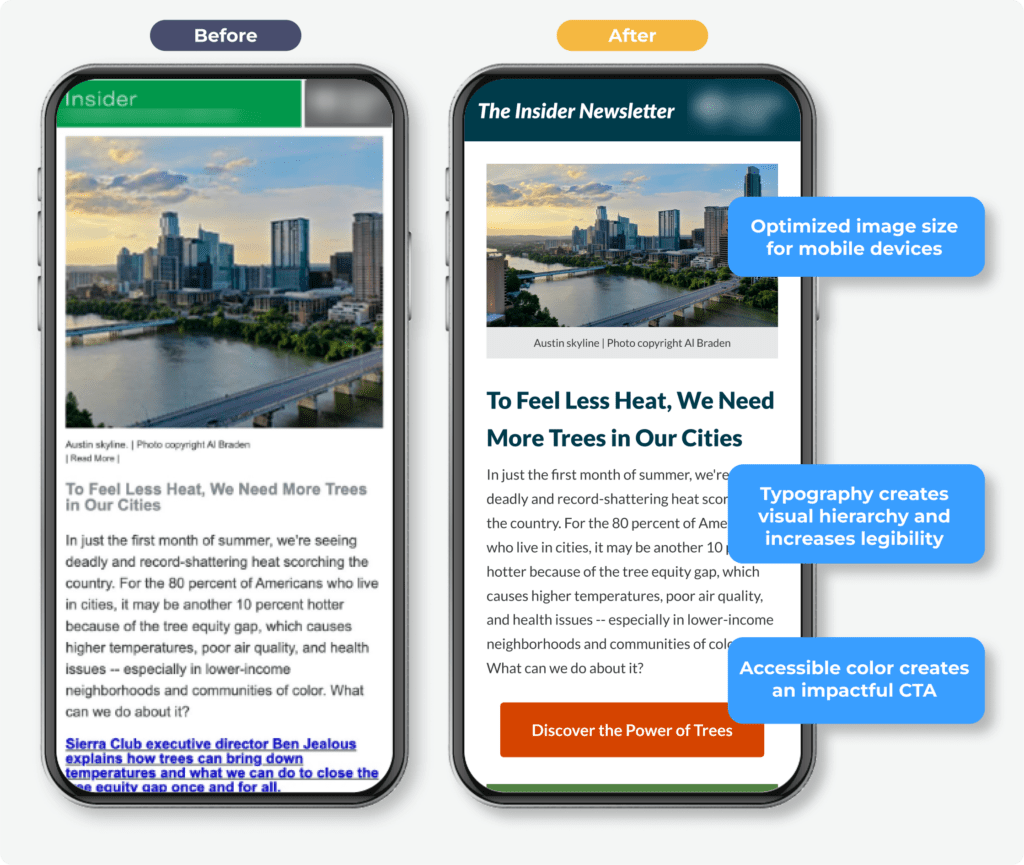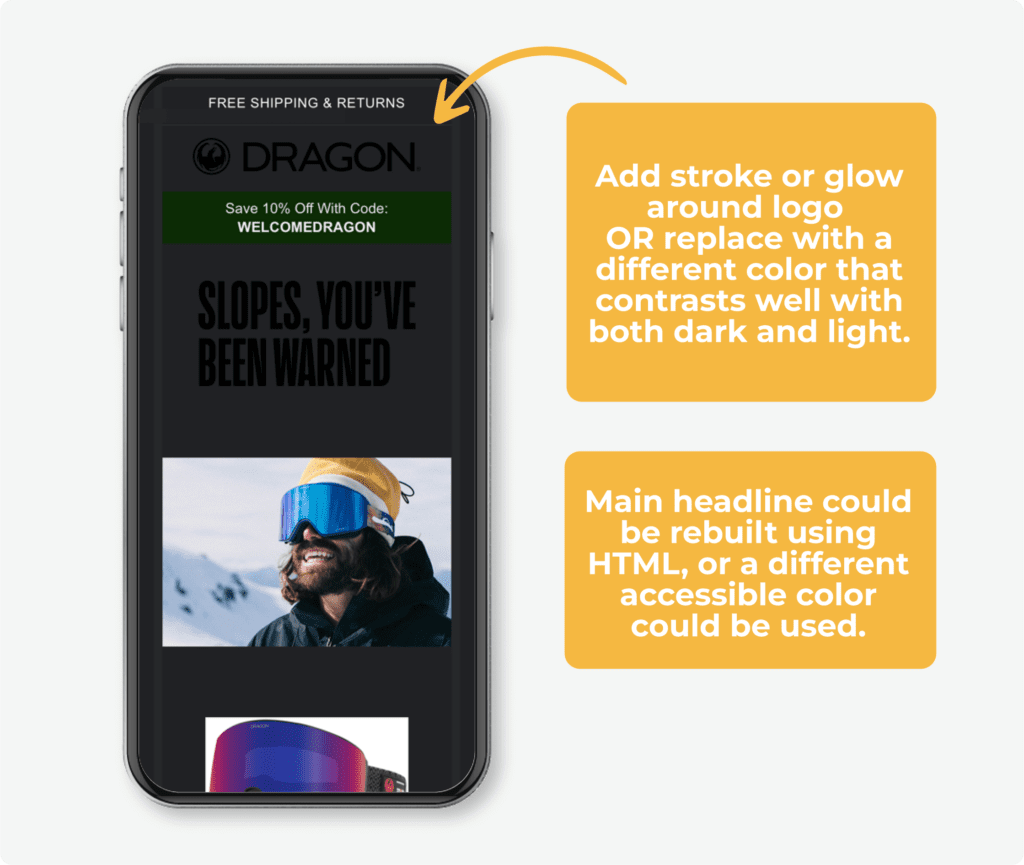In an ever-more-digitized world where email continues to reign supreme as the primary mode of communication across personal and professional spheres, ensuring that your emails are fully accessible has become more than just a checkbox—it’s a commitment to inclusivity. At a time when 92% of consumers desire empathetic practices from brands and 84% consider a company’s environmental, social, and governance (ESG) policies before making a purchase, the importance of inclusive communication cannot be overstated.
The Scale of the Accessibility Challenge
With 2.2 billion people globally experiencing some level of vision impairment, 285 million of whom may have a visual impairment that requires screen readers to properly consume web content, addressing accessibility is something marketers increasingly need to keep front of mind. Globally, color blindness affects 1 in 12 men and 1 in 200 women; additionally, 5-10% of the global population is dyslexic. Accessibility isn’t “someone else’s problem” and inclusivity is not just a matter of choice; it’s a necessity.
Why Does It Matter to Your Bottom Line?
Email, with a remarkable average 45:1 return on investment (ROI) for e-commerce and retail, stands as a pivotal marketing channel and you’re leaving money on the table if your content excludes segments of your audience. In a world where brand reputation and customer trust are paramount, inclusivity is no longer just about meeting regulatory requirements; it’s a strategic advantage. We’ve selected three ways you can boost revenue through more accessible content based on some of our recent testing.
1. If you’re a nonprofit, accessible content creates a better donor experience and makes it easier for your donors to support your cause.
Text and typography are key considerations for accessibility. Maintaining recommended font sizes—and going deeper to identify the sizes that work best for your audience—is crucial to ensure a broad audience across various devices easily understands your content. We recently tested into the optimal font size for legibility and sizing for a large American nonprofit organization and found there was a significant impact on giving as well as with the content itself with a 41 percent increase in donations and a four percent increase in read-through rate.

2. Going beyond a single definition of mobile-optimized and truly embracing iterative, ongoing mobile optimization allows you to meet your customers where they are.
As mobile usage continues to dominate, having mobile-friendly designs is crucial for reaching customers where they are. Too often we hear companies say, “Our email templates are already mobile-optimized.” And they’re not wrong—it’s rare for us to come across a company these days that hasn’t invested in some basic level of mobile optimization–but the critical missing piece is ongoing testing to ensure consistent improvement and responsiveness to any new email app features or layout changes.

3. Complying with accessibility regulations prevents you from breaking the law.
Adhering to the Web Content Accessibility Guidelines (WCAG) is not only a best practice but also a legal necessity to avoid the exclusion of individuals with disabilities. There are some changes you can make fairly easily to help boost your compliance, such as including alt text for images to facilitate screen reading and maintaining a readability score of 60-70 suitable for 13- to 15-year-old students. There are also lots of tools out there to help you, such as readability tests or apps that simulate color blindness.
Designing your email content to have proper color contrast is essential, and it’s not enough that your content renders properly for your device. Different apps render content very differently, with Apple’s Dark Mode and similar color schemes being particularly tricky to accommodate. With Dark Mode saving over 60% of battery life on certain displays and many sources indicating broad usage as high as 80%, Dark Mode is not a niche consideration.

Closing the Accessibility Gap
We’re not sure whether we should be surprised that, despite the critical nature of inclusive email communication, only 14% of marketers report using accessibility testing tools, but we certainly are disappointed. Closing this gap is not just a moral obligation; it’s a business imperative.
In 2024, inclusivity is not a mere box-checking exercise—it’s a reflection of genuine care for your audience. By embracing accessible email practices, brands can enhance their reputation, build customer trust, and tap into the immense potential of a diverse and inclusive market. As we navigate the digital landscape, let’s not forget that inaccessibility isn’t just a missed opportunity; it’s a disservice to millions around the globe who deserve equal access to information and communication.
We’d love to help you join the 14% of marketers driving the industry forward by making content more accessible and inclusive, so drop us a line!

